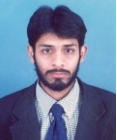Impact of Hindustani ragas in stress management: A statistical study
Abstract
Keywords
Full Text:
PDFReferences
1. Thaut MH. Rhythm, music and the brain: Scien-tific foundations and clinical applications, 1st ed. Oxfordshire: Routledge; 2005.
2. Beran J. Statistics in musicology, 1st ed. Boca Raton: Chapman and Hall/CRC Press; 2004.
3. Temperley D. Music and probability. Cam-bridge: MIT Press; 2007.
4. Tewari S, Chakraborty S. Statistical musicology: Embracing Hindustani ragas. New York: Nova Science Publishers; 2022. doi: 10.52305/LCKT9868.
5. Patel AD. Music, language and the brain, 1st ed. Oxford: Oxford University Press; 2008.
6. Singh SB, Chandra S, Chakraborty S. A brief survey on music intervention in western and non-western (Indian) music. Med Crave Online Journal of Biology and Medicine 2018; 3(4): 190–194. doi: 10.15406/mojbm.2018.03.00097.
7. Priyadarshini P, Chakraborty S. Using statistical modeling, rate of change of pitch and inter onset interval to distinguish between restful and rest-less ragas. Communications in Mathematics and Statistics 2017; 5(2): 199–212. doi: 10.1007/s40304-017-0108-7.
8. Chakraborty S, Mazzola G, Tewari S, Patra M. Computational musicology in Hindustani music. Cham: Springer Cham; 2014. doi: 10.1007/978-3-319-11472-9.
9. Aldridge D. An overview of music therapy re-search. Complementary Therapies in Medicine 1994; 2(4): 204–216. doi: 10.1016/0965-2299(94)90021-3.
10. Aldridge D. The music of the body: Music ther-apy in medical settings. Advances 1993; 9(1): 17–35.
11. Sarkamo T, Soto D. Music listening after stroke: Beneficial effects and potential neural mecha-nisms. Annals of the New York Academy of Sciences 2012; 1252(1): 266–281. doi: 10.1111/j.1749-6632.2011.06405.
12. Sairam TV. Reviving raga therapy. Delhi: NADA Centre for Music Therapy; 2004.
13. Rammohan GV. Music therapy: The present scenario. In: Raju MVR (editor). Health psy-chology and counselling. New Delhi: Discovery Publishing House; 2009.
14. Singh SB, Chakraborty S, Jha KM, et al. Impact of Hindustani ragas on visual acuity, spatial ori-entation and cognitive functions in patients with cerebrovascular accident and diffuse head injury. Music and Medicine 2013; 5(2): 67–75. doi: 10.47513/mmd.v5i2.212.
15. Perceived stress scale [Internet]. Concord: NH Department of Administrative Services; [ac-cessed 2022 Nov 1]. Available from: https://www.das.nh.gov/wellness/Docs%5CPercieved%20Stress%20Scale.pdf.
16. Chakraborty S, Katyayan N. Statistical musicol-ogy with therapeutic applications. Med Crave Online Journal of Biology and Medicine 2023; 8(2): 50–53. doi: 10.15406/mojbm.2023.08.00183.
17. Roederer J. The physics and psychophysics of music: An introduction, 4th ed. New York: Springer New York; 2008. doi: 10.1007/978-0-387-09474-8.
DOI: https://doi.org/10.59400/jam.v1i1.143
(118 Abstract Views, 52 PDF Downloads)
Refbacks
- There are currently no refbacks.
Copyright (c) 2023 Soubhik Chakraborty, Avinav Prasad, Apoorva Chakraborty, Prerna Singh

This work is licensed under a Creative Commons Attribution-NonCommercial 4.0 International License.

This site is licensed under a Creative Commons Attribution 4.0 International License.
 Journal of AppliedMath
Journal of AppliedMath



